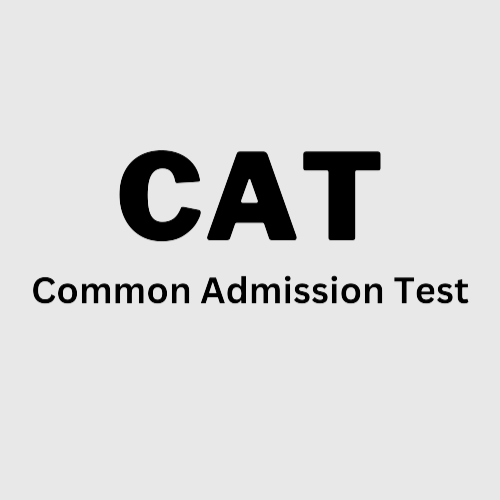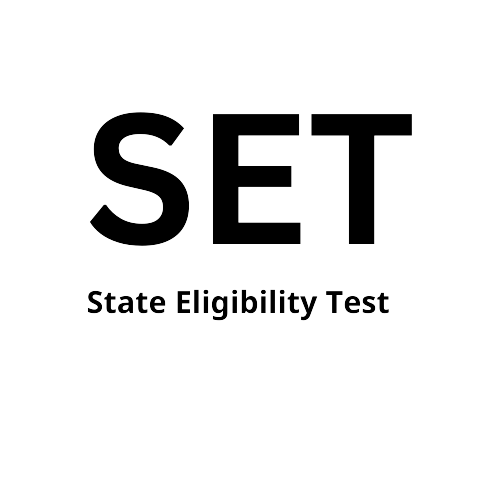Table of Contents
Syllabus: CAT 2023
Verbal Ability and Reading Comprehension (VARC), Data Interpretation and Logical Reasoning (DILR), and Quantitative Aptitude are the three parts of the CAT syllabus for 2023. (QA). The CAT’s course outline hasn’t changed much over the years. But the CAT test pattern has been changed more than once. The candidates must know the CAT detailed syllabus in order to do well on the test.
Overview of the CAT Syllabus 2023
The CAT curriculum is very broad and covers everything. Even though there isn’t a set CAT curriculum for the IIMs’ CAT exam, most of the questions are based on English and math classes from middle school. On this page, CAT students can find the most up-to-date CAT syllabus 2023 and CAT syllabus PDF. It’s important to point out that the list of topics is very long. Before moving on to the CAT exam syllabus 2023, it’s important to remember a few important facts about the CAT exam. Every year, the Common Admission Test (CAT) is given by one of India’s IIMs. This happens on a rotating basis.
| Sections | Topics |
|---|---|
| Quantitative Aptitude | Number System, Geometry, Algebra, Mensuration, Time and Work |
| Logical Reasoning & Data Interpretation | Seating Arrangement, Blood Relation, Syllogism, Tables, Graphs, Data Caselets |
| Verbal Ability & Reading Comprehension | Para-jumbles & para-summary, sentence completion, inferences, RC CAT passages based questions |
CAT Exam Syllabus 2023
The CAT exam syllabus includes all subjects and sections which are listed below:
| Quantitative Aptitude Syllabus | Data Interpretation & Logical Reasoning Syllabus | Verbal Reasoning Syllabus |
|---|---|---|
| Number Systems | Tables | English Usage or Grammar |
| Profit, Loss and Discount | Caselets | Vocabulary Based (Synonyms/ Antonyms) |
| LCM and HCF | Bar Graphs | Fill in the blanks |
| Speed, Time and Distance | Line Charts | Sentence Correction |
| Percentages | Column Graphs | Cloze Passage |
| Time and Work | Venn Diagrams | Jumbled Paragraph |
| Ratio and Proportion | Pie Chart | Meaning-Usage Match |
| Averages | Other Basic Reasoning Questions | Analogies or Reverse Analogies |
| Quadratic Equations & Linear Equations | Calendars | Summary Questions |
| Complex Numbers | Number and Letter Series | Verbal Reasoning |
| Simple and Compound Interest | Clocks | Facts-Inferences-Judgments |
| Logarithm | Venn Diagrams | Reading Comprehension |
| Sequences and Series | Cubes | – |
| Inequalities | Seating Arrangement | – |
| Probability | Binary Logic | – |
| Surds and Indices | Logical Matching | – |
| Set Theory & Function | Logical Sequence | – |
| Permutation and Combination | Syllogism | – |
| Mixtures and Alligations | Logical Connectives | – |
| Trigonometry | Blood Relations | – |
| Coordinate GeometryGeometryMensuration | – | – |
| Coordinate GeometryGeometryMensuration | – | – |
| Coordinate GeometryGeometryMensuration | – | – |
Quantitative Aptitude Syllabus
There are a few topics in the quantitative aptitude component of the CAT exam that are extremely important and are covered year after year. There are 22 questions in this section, 14 of which are not multiple-choice questions. The most significant CAT 2023 syllabus subjects and their weights are listed here.
| Topic Name | Expected No. of Questions |
|---|---|
| Arithmetic | 8-9 |
| Algebra | 6-7 |
| Number System | 1-2 |
| Geometry & Mensuration | 4-5 |
| Modern Maths | 1-2 |
Syllabus for Data Interpretation and Logical Reasoning
In the CAT’s logical reasoning and data interpretation section, there are 22–24 questions, and 6–8 of them are based on TITA. The segment had 16 questions in each of the CAT DI and LR categories, evenly split between the two sections until CAT syllabus 2017. On the CAT 2018 and CAT 2019 tests, however, there were 20 questions about logical reasoning and 12 questions about how to interpret data. Students were surprised by the part of the CAT 2020 that had 16 questions about how to interpret data and 8 questions about how to think logically. The DILR part of the CAT 2021 had a total of 20 questions, 15 of which were not MCQs. The DI section is made up of three to four sets of questions, and candidates must fully understand each set in order to get all of the questions in the set right. Here are the topics and questions that will be on the CAT exam in 2021:
| DILR Topics | Number of Questions |
|---|---|
| LR Set (Number-Based Reasoning) | 6 |
| Bar Graph on Percentages | 4 |
| Tabular DI- Smoothies | 6 |
| Table – Relation (Acquaintance,Friend & Stranger) | 4 |
| Arranging People into Countries & Categories | 4 |
| Rating | 6 |
| Bar Graph | 4 |
| LR Set (Number Based Reasoning) | 6 |
| Javelin Tournament | 6 |
| Mixtures | 4 |
| Review of Academic Questions | 6 |
| Gantt Chart | 4 |
Verbal Reasoning Syllabus
There are 24 questions in the CAT verbal ability and reading comprehension part, 19 of which are non-MCQ questions. The majority of the questions are from reading comprehension. The list below includes some of the key CAT VARC curriculum subjects.
| Topics | Expected No. of Questions |
|---|---|
| Reading Comprehension Passage-Based Questions | 16 |
| Para-Jumbles | 3-4 |
| Para-Summary | 3-4 |
| Odd Sentences | 1-2 |
| Odd Sentences | 1-2 |
EXAM Syllabus Weightage
There are three components total in the CAT syllabus, and each one has a different weight on the CAT test. Although the CAT syllabus is organized into three sections, there are five sections because the VARC and DILR portions have two additional subsections. Read more details below.
CAT Overall Syllabus Weightage
| CAT Syllabus Sectional Division | Overview of CAT Topics in Syllabus | Overall Weightage |
|---|---|---|
| Section-1: CAT VARC Syllabus Weightage & Topics (Sectional Division is given below | RC Based Questions, Parajumbles, Para summary, Out of Context Sentence | 36% |
| Section-1.1: CAT Verbal Ability (VA) Syllabus- Key Topics & Weightage | Jumbled Paragraphs; Para-summary Picking the Out of context sentence from a jumbled paragraph | 10% |
| Section-1.2: CAT Reading Comprehension (RC) Syllabus- Key Topics & Weightage | Long & Short RC CAT Passages followed by questions based on vocabulary, statements, inferences, elaboration of ideas in the passage | 24% |
| Section-2: CAT DILR Syllabus Weightage & Topics (Sectional Division is given below | Data Analysis Charts, Tables, Graphs, Direction sense, seating arrangements | 32% |
| Section-2.1: CAT Data Interpretation Syllabus Weightage & Topics | Set of 3-4 Questions based on Data Charts, Data Tables, Bar Graphs, Venn Diagrams | 16% |
| Section-2.2: CAT Logical Reasoning Syllabus Weightage & Topics | Set of 3-4 Questions based on Seating Arrangement, Team Formation, Clocks & Calendars, Direction Sense, Family Tree | 16% |
| Section-3: CAT Quantitative Aptitude Syllabus Weightage & Key Topics | Individual Questions based on Arithmetic, Algebra, Modern Math, Geometry, Mensuration, Number system, Trigonometry | 34% |
CAT Quantitative Aptitude Syllabus Weightage
There are a few topics in the quantitative aptitude component of the CAT exam that are extremely important and are covered year after year. There are 22 questions in this section, 14 of which are not multiple-choice questions. The most significant CAT 2023 syllabus subjects and their weights are listed here.
CAT QA Syllabus Weightage
| Topics | Expected No. of Questions |
|---|---|
| Arithmetic | 8-9 |
| Algebra | 6-7 |
| Number System | 1-2 |
| Geometry & Mensuration | 4-5 |
| Modern Maths | 1-2 |
CAT Verbal Ability & Reading Comprehension Syllabus Weightage
There are 24 questions in the CAT verbal ability and reading comprehension part, 19 of which are non-MCQ questions. The majority of the questions are from reading comprehension. The list below includes some of the key CAT VARC syllabus subjects.
CAT VARC Syllabus Weightage
| Topics | Expected No. of Questions |
|---|---|
| Reading Comprehension Passage-Based Questions | 16 |
| Para-Jumbles | 3-4 |
| Para-Summary | 3-4 |
| Odd Sentences | 1-2 |
| Others(Sentence Completion or Correction, Fill in the blanks, Vocabulary Based, etc.) | 0-1 |
CAT Logical Reasoning & Data Interpretation Syllabus Weightage
The third component of CAT exam, Data Interpretation & Logical Reasoning (DILR), must be completed following the VARC test. Data Interpretation and Logical Reasoning are the two subsections that make up this part. Look at some crucial subjects for CAT syllabus, as well as some crucial logical thinking and data interpretation issues.
CAT LR & DI Syllabus Weightage
| Topics | Expected No. of Questions |
|---|---|
| Data Interpretation | 4 |
| Data Interpretation | 4 |
| Logical Reasoning | 6 |
| Logical Reasoning | 6 |
Frequently Asked Questions about CAT Syllabus
Q. What kinds of things are on the CAT syllabus?
Ans. The CAT 2022 test includes all the important topics from Verbal Ability and Reading Comprehension, Data Interpretation, Logical Reasoning, and Quantitative Ability. The candidates should pay the most attention to Algebra, Geometry, Arithmetic, Tables, Graphs, Venn Diagrams, Blood Relation, Number Series, Coding-Decoding, Reading Comprehension, Para jumbles, and Verbal Ability.
Q. Does the CAT exam’s course of study change every year?
Ans. Every year, the CAT course plan stays the same. In fact, the test’s curriculum hasn’t changed since it was first given. But every year, the order of the questions in each section of the question paper is different. For example, if Algebra is the most important thing on the CAT Math section one year, then Arithmetic will be the most important thing the next year.
Q. Who makes the CAT curriculum?
Ans. The Indian Institute of Management, which runs the test, decides what is on the CAT syllabus. The same group also decides how the CAT test is set up, how questions are asked, and how points are given.
Q. How are points given on the CAT 2022?
Ans. The CAT 2022 test should have a total of 198 points. For each right answer, you get three points, and for each wrong answer, you lose one point. There is no way to lose points for not answering a question.
Q. Is the CAT the same as other MBA entrance exams in terms of what it tests?
Ans. CAT’s course outline is the same as that of other MBA entrance exams. Verbal Ability, Reading Comprehension, Data Interpretation, Logical Reasoning, and Quantitative Aptitude are the most important parts of all MBA entrance exams. The CAT is more difficult than most other tests, though.
Q. How long does the CAT test last?
Ans. The CAT test lasts for 120 minutes (two hours). 40 minutes have been set aside for each section. The total amount of time given to PwD candidates is 180 minutes, and each section has a time limit of 53 minutes.
Q. What is the best place to learn about the CAT?
Ans. India has a number of very good places to study for the CAT exam. Candidates can choose the coaching institute based on how they want to study and how much it will cost.
Q. Which part of the CAT test is the hardest?
Ans. The CAT test is hard overall, but most people have trouble with VARC because the Reading Comprehension passages are long and hard to understand. Sometimes, reasoning questions are also long and take a lot of time.
Q. Which part of the CAT 2022 will have the most weight?
Ans. The VARC and Quantitative Aptitude sections of CAT 2022 are worth 72 and 66 points, respectively, while the DILR section is worth 60 points. So, there isn’t much difference between the weights of the CAT sections as a whole.
Q. Are the NCERT books on math enough to cover the CAT maths curriculum?
Ans. You can study for CAT’s Quantitative Aptitude or Maths syllabus with NCERT books for Maths classes 9 and 10, which will help you understand the basics. However, you should use the books that are recommended for CAT preparation.






















